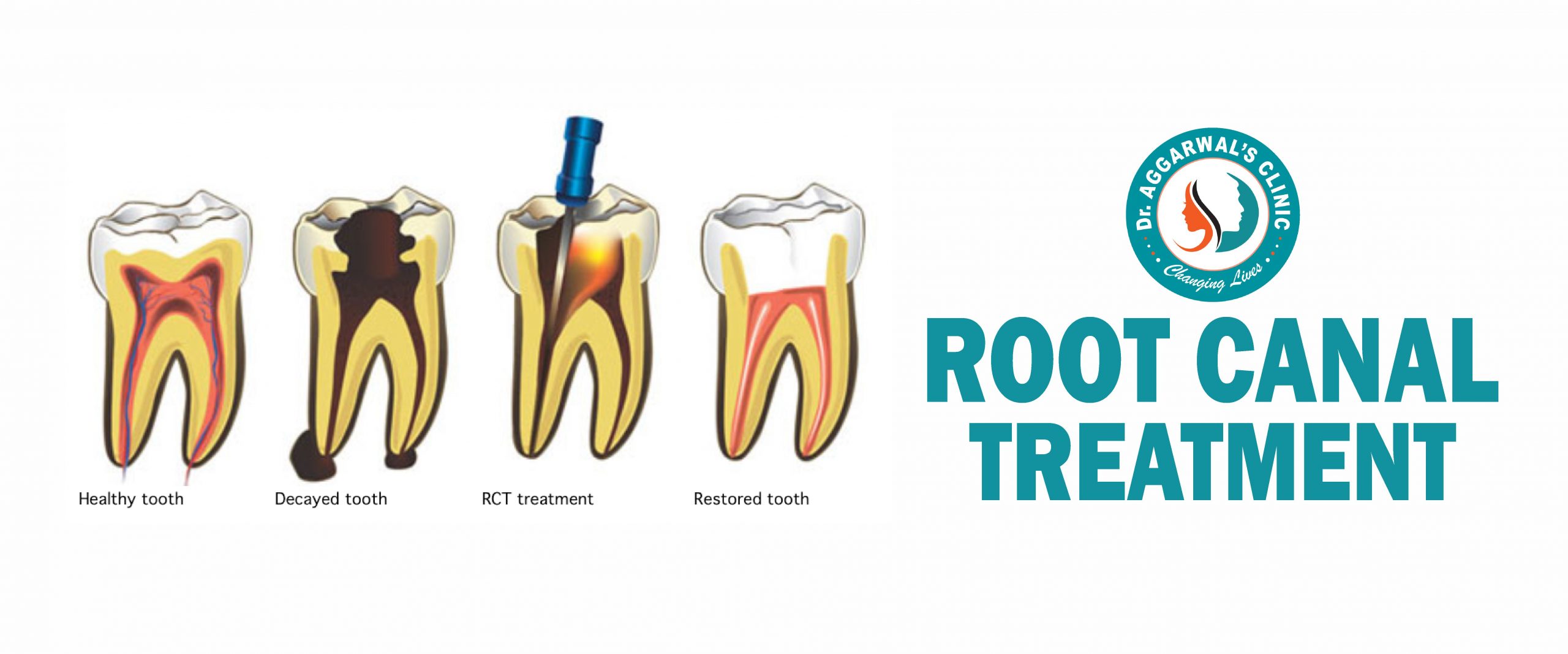Root Canal Treatment

Book An Appointment
Meet Our Team of Experts.
Dr. Anika Aggarwal is amongst the best dentist in Jodhpur who specializes in Dental Cosmetics and is a Root Canal Specialist. She is highly qualified and has done MDS in conservative and endodontics. She has been serving patients related to dental from many years and connects efficiently with all her patients to so as to study the case and accordingly treat the patients effectively. This approach provides comforts to the patients and they can openly share all the health problems from which they are suffering. Through this, she has been spreading smiles to all her patients by providing the care their teeth deserve.
MAKE AN APPOINTMENT
Meet Our Team of Experts.
Dr. Anika Aggarwal is amongst the best dentist in Jodhpur who specializes in Dental Cosmetics and is a Root Canal Specialist. She is highly qualified and has done MDS in conservative and endodontics. She has been serving patients related to dental from many years and connects efficiently with all her patients to so as to study the case and accordingly treat the patients effectively. This approach provides comforts to the patients and they can openly share all the health problems from which they are suffering. Through this, she has been spreading smiles to all her patients by providing the care their teeth deserve.
Root Canal Treatment
Roor canal treatment is one of the most important and often misinterpreted dental treatment, it is often referred or associated with dental pain or a treatment that incites fear amongst patients but it isn’t so. It is rather one of the most vital treatments to secure the natural teeth against conditions like tooth decay, repeated dental procedures, incorrect crowns, or a crack or chip in the tooth. Our Modern Root Canal Treatment in Gurgaon is painless and relieves tooth ache effectively in addition to saving the natural tooth. Time required is approximately 30-45 minutes for the entire procedure.

Steps
Root canal therapy is done in three steps, and it takes between one and three sessions to complete.
1. Cleaning the root canal
First, the dentist removes everything that is inside the root canal.
With the patient under local anesthesia, the dentist makes a small access hole on the surface of the tooth and removes the diseased and dead pulp tissue with very small files.
2. Filling the root canal
Next, the dentist cleans, shapes and decontaminates the hollow area, using tiny files and irrigation solutions. Then, the tooth is filled with a rubber-like material, using an adhesive cement to seal the canals completely.
After root canal therapy, the tooth is dead. The patient will no longer feel any pain in that tooth because the nerve tissue has been removed, and the infection has been eliminated.
3. Adding a crown or filling
However, the tooth will be now more fragile than it was before. A tooth with no pulp must receive its nourishment from the ligament that attaches the tooth to the bone. This supply is adequate, but in time, the tooth will become more brittle, so a crown or filling offers protection.
Until the crown or filling is complete, the patient should not chew or bite on the tooth. Once there is a crown or filling is done, the person can use the tooth as before.
Treatment often takes only one appointment, but if there are curved canals, multi-canals, or large infections, this could take one or two additional appointments.
How painful is it?
One of the great fears about this kind of treatment is that it will be painful, but the treatment that is carried out by a trained dental surgeon should be relatively painless.
The pain that is felt comes from the infection and not from the treatment. The treatment does not cause pain; it helps to alleviate it.
The dental surgeon will relieve the pain of the procedure by numbing the tooth and surrounding area with local anesthesia.
After the treatment, some tenderness is normal. It is temporary, and over-the-counter (OTC) pain medication may be enough to relieve it. If needed, prescription drugs, such as codeine, are available.
The dentist may prescribe an antibiotic to treat or prevent infection.
Who needs it?
If the pulp becomes injured or diseased, it cannot repair itself, and the tissue dies.
If there is a deep cavity, a cracked tooth, or a loose filling, bacteria can enter the pulp.
The bacteria will eventually destroy the pulp. If the bacteria penetrate through the root openings, it can cause an infection in the bone.
An infection will weaken the bone and break it down. The ligaments around the tooth will swell, and the tooth will become loose.
A pulp injury will make the tooth sensitive to high and low temperatures. There may be pain when chewing, and some people have a continuous, throbbing pain.
Without treatment, the infection will spread. Eventually, the tooth will become loose and need extracting.
Some patients opt for extraction, especially if it hurts a lot or if the tooth cannot be restored, for example, if there is large decay, trauma, or loss of bone due to periodontal, or gum, disease.
However, removing a tooth may mean that the surrounding teeth start to move and become crooked. This can look unsightly, and it can make it hard to have a good bite.
Root canal therapy will usually save the tooth and eliminate the pain.
If the tooth cannot be saved, the next best option is an implant.
However, saving the natural tooth is best, if possible, because nothing functions as well as a natural tooth.
What does it cost?
The cost of dental treatment varies widely, but saving the tooth with a root canal is relatively cost-efficient.
The other option is extraction, and the cost of an implant or bridge to replace the tooth afterward is usually more expensive. Extraction can also lead to malocclusion, or misaligned teeth, and difficulty chewing.
Complications
As with any procedure, complications can occur.
- Sometimes the dentist only finds three root canals in a tooth that has four. If one canal remains untreated, the infection might continue and spread into the bone.
- The dentist must also make sure the filling material goes far enough into the canal, to fill it up. If the root canal is not properly sealed, the infection could return.
- During the procedure, the root of the tooth may crack, or the instruments can break in the canal or perforate the canal. This makes it hard to fill the tooth effectively.
If complications occur, a specialist can try to correct the problem and complete the root canal.
To avoid complications, patients should always follow the dentist’s instructions. If an antibiotic is needed, it is important to finish the entire prescription.
It is essential to have a permanent restoration placed, such as a crown, once the root canal therapy is complete.
Prevention
To prevent infections, tooth decay, and gum disease, dentists recommend:
- brushing teeth last thing at bedtime and at least one other time each day
- using toothpaste that contains fluoride
- using a suitable toothbrush and replacing it regularly
- attending regular dental checkups and cleanings
- flossing to clean between the teeth and prevent the buildup of plaque
- avoiding sugary drinks and foods, and following a healthy diet.
Dental sealants can also prevent decay.
Frequently Asked Questions
Dentists use the term “root canal” in referring to the tiny, narrow passageways that branch from a central, hollow space in your tooth (called the pulp chamber) down to the ends of the tooth roots. The term can also be used as a shorthand for “root canal treatment” — that is, the procedure used to save the tooth if the soft tissue deep inside of it (called pulp) becomes acutely inflamed or infected.
If tooth pulp becomes acutely inflamed or infected because of decay or injury, the tissue will need to be removed in order to save the tooth and stop the infection from spreading. As an adult, you don’t actually need the pulp — its primary use is to aid in tooth development during childhood.
You could have the whole tooth extracted, but it’s always better to try to save it — especially since root canal treatment is routine and has a very high success rate (over 90%). Saving the tooth can prevent other troubles from occurring later on; these could include bite problems from teeth shifting position, difficulty eating, and loss of jawbone volume and density.
The procedure normally causes no more discomfort that a filling would. Root canal treatment may have a bad reputation, but it is undeserved; in this case it’s the disease that’s to blame and not the cure. In other words, the infections that make the treatment necessary in the first place are often painful because they are inflaming tissue that has lots of nerves and therefore is very sensitive. Root canal treatment actually relieves this pain!
After numbing the area, a tiny hole in the crown (top) of your tooth is made to access the pulp chamber and canals. The diseased tissue is removed, and the pulp chamber and the canal(s) are disinfected all the way to the root end(s). Teeth in the front of the mouth have one root and generally one canal; back teeth have two or three roots and generally three or four canals. Those canals and the pulp chamber are filled with an inert, biocompatible material, and sealed with adhesive cement. The access hole will receive a temporary filling.
Your tooth may feel sensitive for a few days, but any discomfort can usually be relieved with over-the-counter pain medication or anti-inflammatories like ibuprofen. You will be instructed to avoid chewing on that tooth until it receives its permanent filling, which can be placed a few days later. Depending on how damaged the tooth was to begin with, it may need a full-coverage crown. Those options will be discussed with you.
Keep your teeth decay-free by brushing and flossing every day. Eat a healthy diet low in sugar and avoid acidic beverages such as soda. Have regular professional cleanings and exams. And if you’re active in sports, consider ordering a custom-made mouthguard to protect your teeth from injury.



